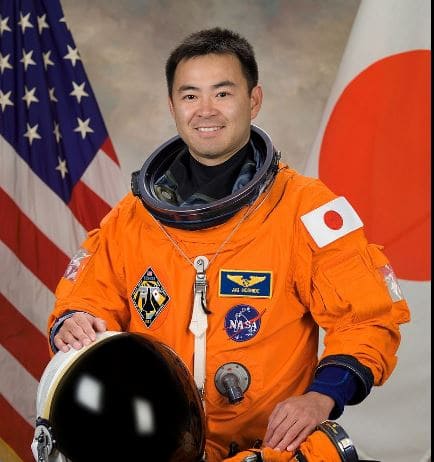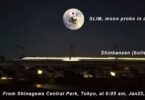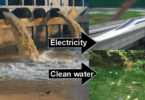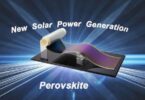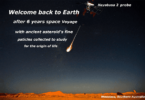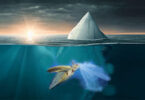Hi everyone, how is it going? Today’s theme is about SpaceX Crew Dragon ship carrying a Japan’s astronaut together with three American astronauts, successfully docked with ISS (The International Space Station) on Monday.
SpaceX’s newly-launched pill with 4 astronauts arrived on Tuesday (Nov17,2020) on ISS, their new house till next spring 2021.
The Dragon pill pulled up and docked early on Tuesday morning, following a 27-hour, utterly automatic flight from Nasa’s Kennedy Space Centre.
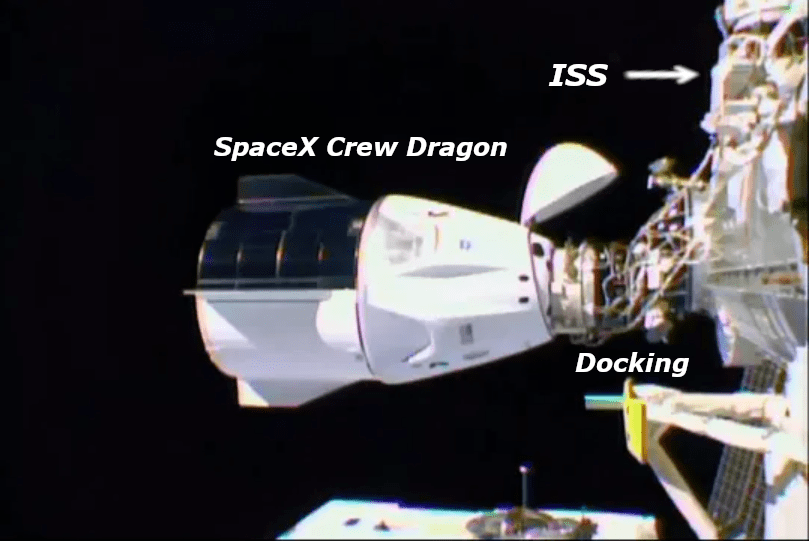
The SpaceX Crew Dragon docked to the International Space Station on November 16, 2020
The linkup took place 262 miles above Idaho. And when the team entered the ISS one by one to hold them in an embrace each other.

In this frame grab from NASA TV, astronaut Soichi Noguchi, background right, is greeted by astronaut Kate Rubins, as he enters the International Space Station from the vestibule between the SpaceX Dragon capsule and the ISS, early on Nov. 17, 2020. (NASA TV via AP)
About ISS?
ISS (The International Space Station) is a modular space station (habitable artificial satellite) in low Earth orbit.
It is a multinational collaborative project between five participating space agencies: NASA (United States), Roscosmos (Russia), JAXA (Japan), ESA (Europe), and CSA (Canada).
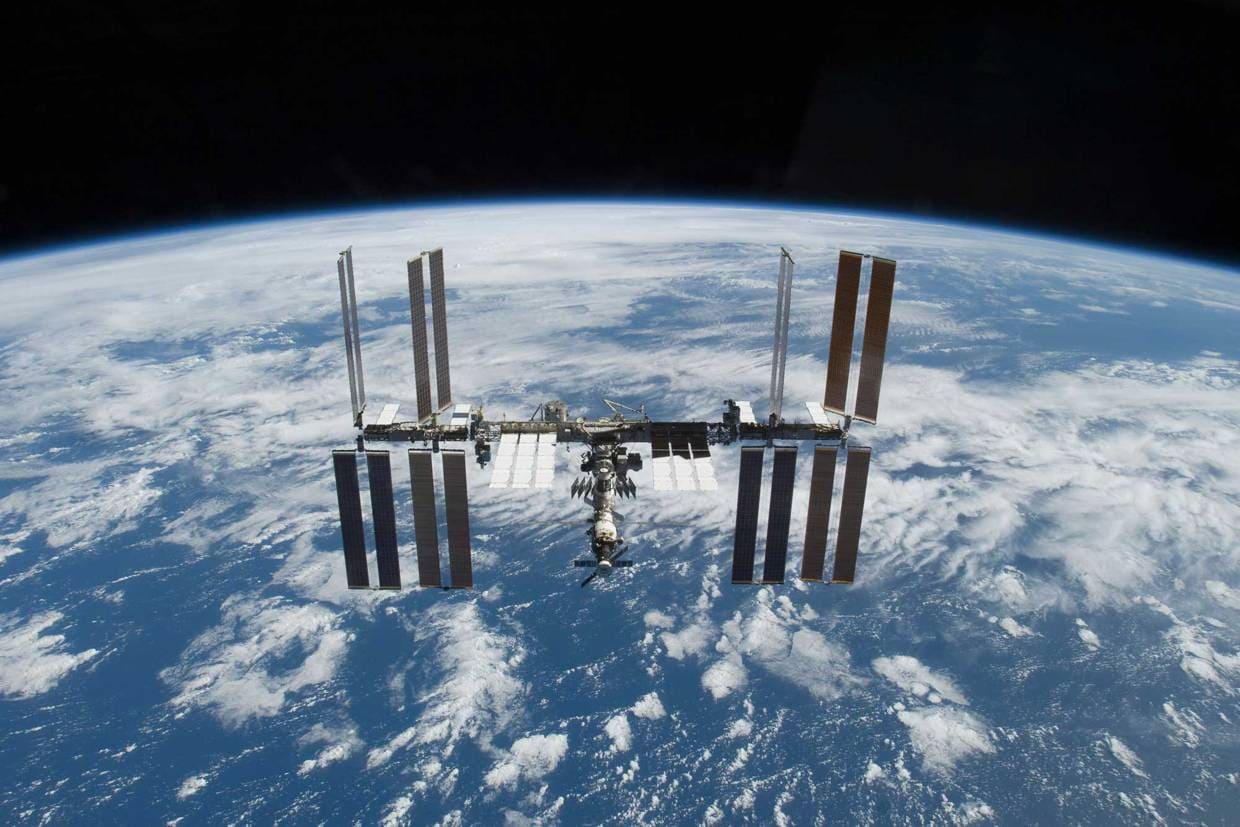
The ISS circles the Earth in roughly 93 minutes, completing 15.5 orbits per day.
The ownership and use of the space station is established by intergovernmental treaties and agreements.
The station serves as a microgravity and space environment research laboratory in which scientific research is conducted in astrobiology, astronomy, meteorology, physics, and other fields.
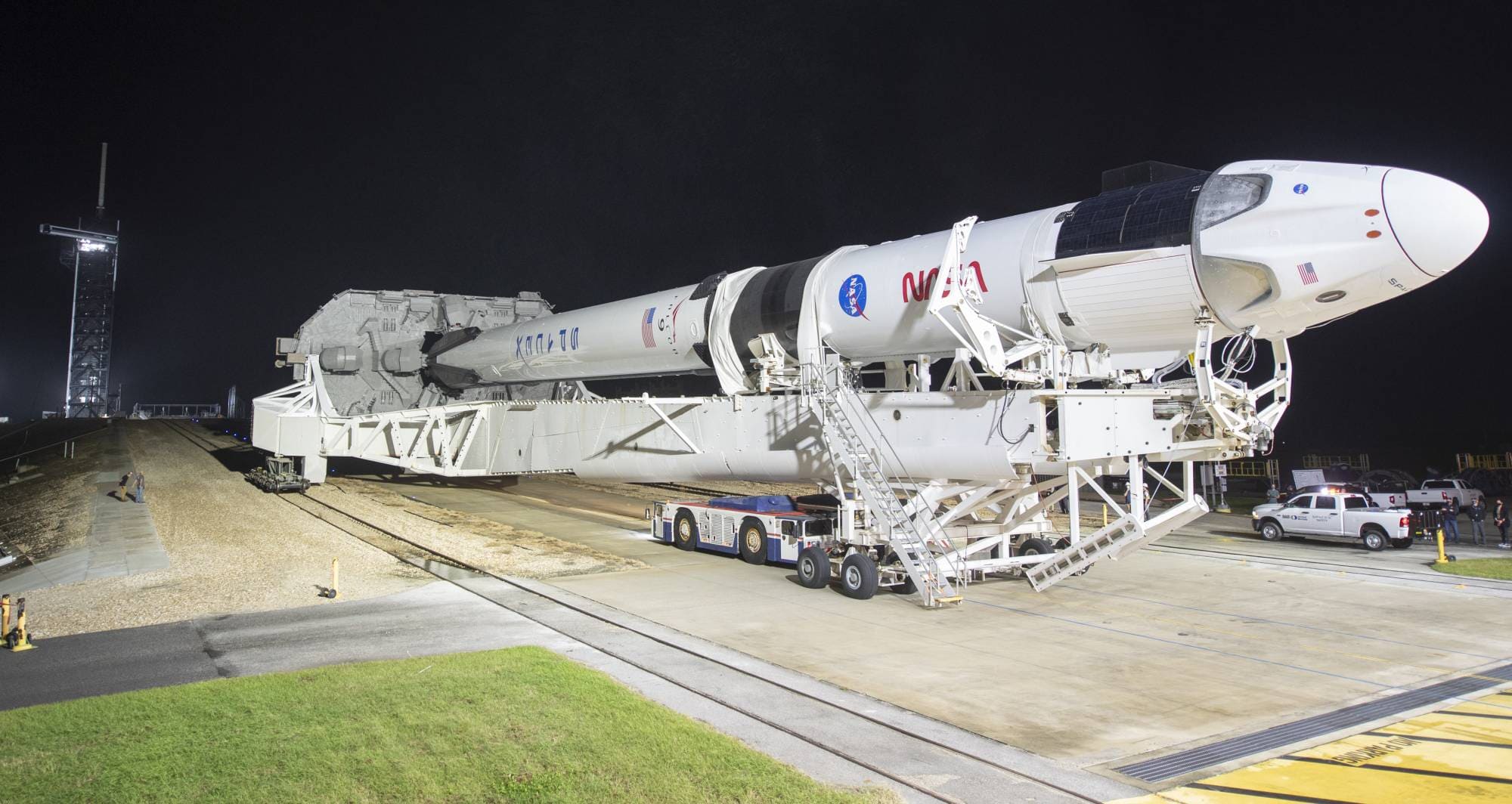
In this Monday, Nov. 9, 2020 photo provided by NASA, a SpaceX Falcon 9 rocket and Crew Dragon capsule is rolled out of the horizontal integration facility at Launch Complex
It is the largest artificial object in space and the largest satellite in low Earth orbit, regularly visible to the naked eye from Earth’s surface.
It maintains an orbit with an average altitude of 400 kilometres (250 mi) by means of reboost manoeuvres using the engines of the Zvezda Service Module or visiting spacecraft.
As of December 2018, the station is expected to operate until 2030.
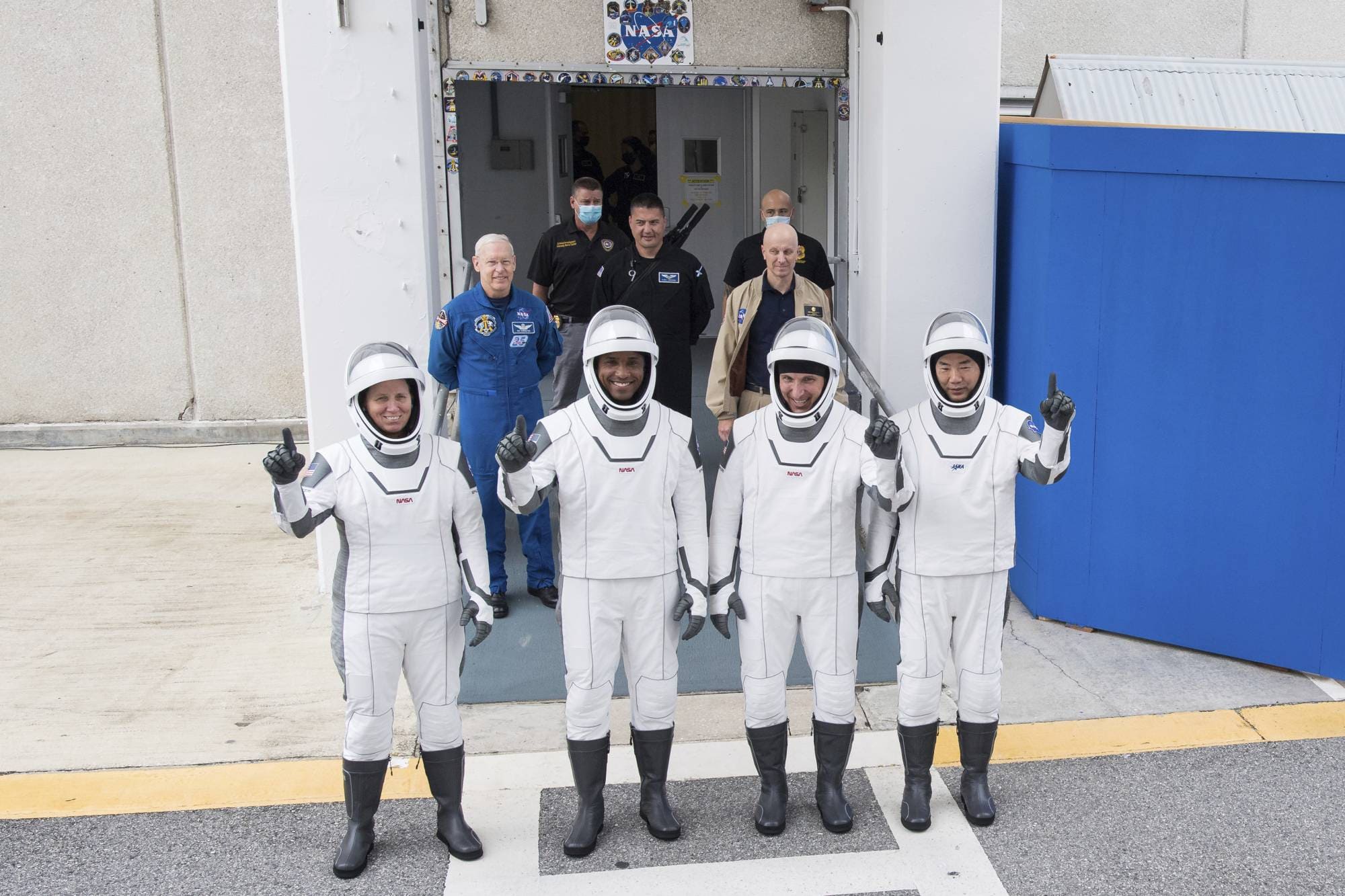
NASA astronauts, from left, Shannon Walker, Victor Glover, Mike Hopkins and Japan Aerospace Exploration Agency (JAXA) astronaut Soichi Noguchi, right, wearing SpaceX spacesuits, stop to pose for a picture as walk out of the Neil A. Armstrong Operations and Checkout Building to depart for Launch Complex
The ISS consists of pressurised habitation modules, structural trusses, photovoltaic solar arrays, thermal radiators, docking ports, experiment bays and robotic arms.
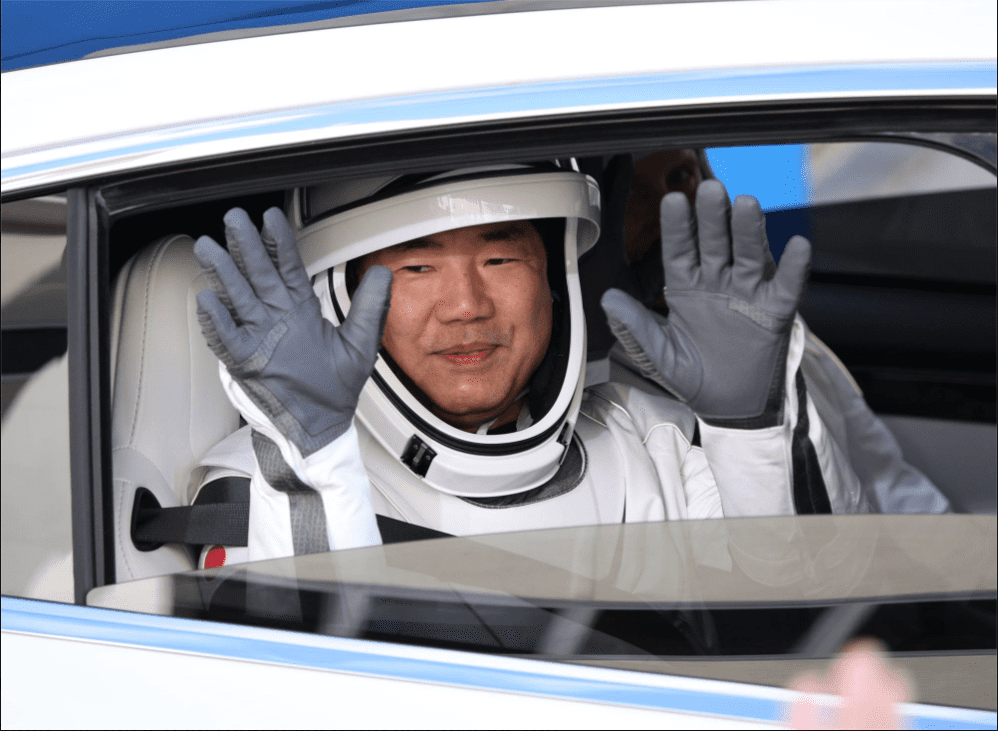
Japan Aerospace Exploration Agency (JAXA) astronaut Soichi Noguchi waves as the crew of a SpaceX Falcon 9 rocket departs to the launchpad for the first operational NASA commercial crew mission at Kennedy Space Center in Cape Canaveral, Florida, on Sunday. |REUTERS
The station is serviced by a variety of visiting spacecraft: the Russian Soyuz and Progress, the U.S. Dragon and Cygnus, the Japanese H-II Transfer Vehicle, and, formerly, the European Automated Transfer Vehicle.
The Dragon spacecraft allows the return of pressurised cargo to Earth, which is used, for example, to repatriate scientific experiments for further analysis.
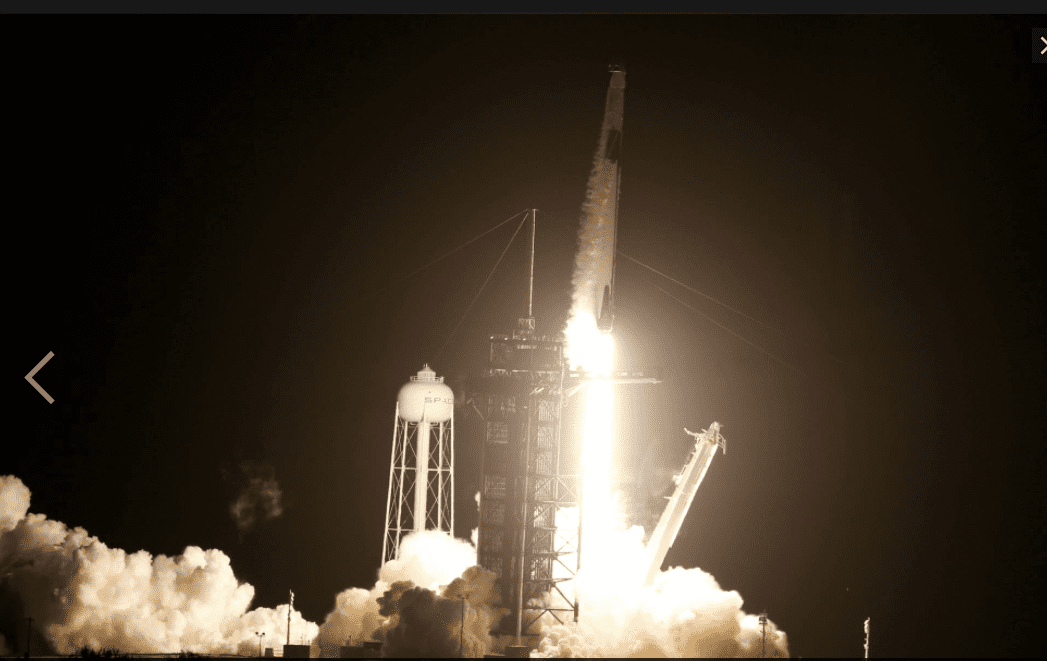
A SpaceX Falcon 9 rocket, with the Crew Dragon capsule, is launched carrying four astronauts at the Kennedy Space Center in Cape Canaveral, Florida, on Sunday. |REUTERS
As of September 2019, 239 astronauts, cosmonauts, and space tourists from 19 different nations have visited the space station, many of them multiple times.

astronauts Mike Hopkins, left, and Victor Glover monitor controls aboard SpaceX Dragon as the capsule approaches the International Space Station, late Monday, Nov. 16, 2020 (NASA TV via AP)
This includes 151 Americans, 47 Russians, nine Japanese, eight Canadians, five Italians, four French, three Germans, and one each from Belgium, Brazil, Denmark, Kazakhstan, Malaysia, the Netherlands, South Africa, South Korea, Spain, Sweden, the United Arab Emirates, and the United Kingdom.
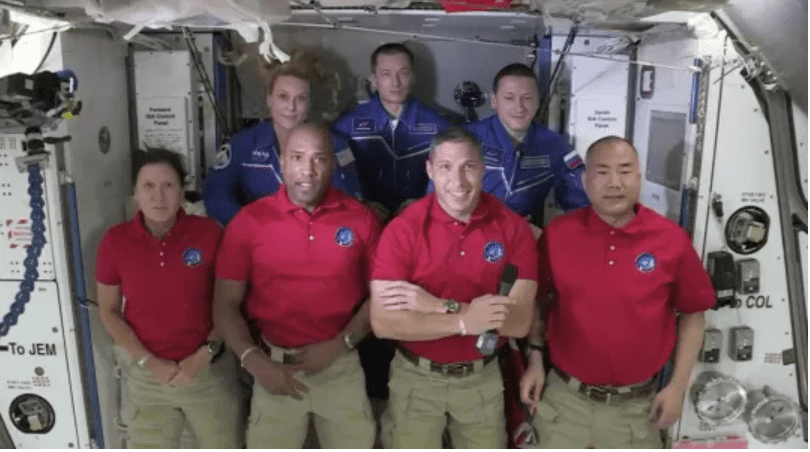
In this body seize from Nasa TV, SpaceX Dragon team, from entrance left to proper, Shannon Walker, Victor Glover, Mike Hopkins and Soichi Noguchi stand with International Space Station team Kate Rubins, from again left, Expedition 64 commander Sergey Ryzhikov and Sergey Kud-Sverchkov all through a welcome rite, Tuesday, Nov. 17, 2020 (NASA TV via AP)
The ISS is suited for testing the spacecraft systems and equipment required for possible future long-duration missions to the Moon and Mars.
Two more Japanese astronauts to stay at ISS
Japan’s space agency announced that two more Japanese astronauts have been scheduled for long-term stays at the International Space Station.
The Japan Aerospace Exploration Agency, or JAXA, said on Friday that Wakata Koichi will stay at the ISS sometime around 2022, and Furukawa Satoshi around 2023.
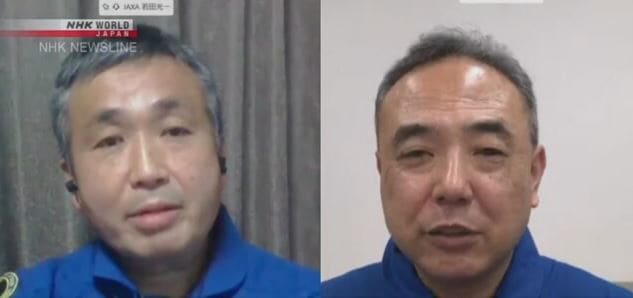
Two astronauts: Wakata Koichi (left), Furukawa Satoshi (right)
Wakata said in an online news conference that space travel is a rare opportunity and he feels inspired.
He also said serving as a JAXA vice president enabled him to learn about the role and direction of manned space flights from a broader perspective.
He said he will make full use of his experience to achieve the best result.
Furukawa said a long time has passed since his first space mission in 2011. But he actually feels as if the time passed very quickly.
He also said he always wanted to go to space again if he had a chance, so he has kept his motivation.
Wakata is 57 years old. The next mission will be his fifth — the most number among Japanese astronauts.
Furukawa, who is 56 years old, is a medical doctor. The next space flight will be his second.
Hoshide Akihiko (below) is due to start from next year.
Finally, We pray for the safe return of the astronauts to Earth after their remarkable missions at the ISS.
At the same time, Hayabusa2 is an asteroid sample-return mission operated by the Japanese space agency, JAXA.
Hayabusa2 was launched on 3 December 2014 and rendezvoused with near-Earth asteroid 162173 Ryugu on 27 June 2018.
It surveyed the asteroid for a year and a half and took samples. It left the asteroid in November 2019 and is expected to return to Earth on 6 December 2020.
So we have two blogs about Hayabusa, “Hayabusa2 (No.1),space probe lands on Ryugu asteroid, 300 million kilometers away” and “Hayabusa2 (No.2) probe makes crater on asteroid in historic first“, both of which are well-worth browsing, thanks


